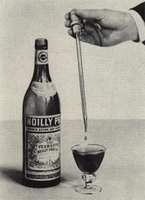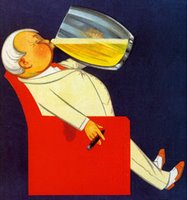Cocktail Trends in 2006

Food & Wine's December issue hailed 2005 as the "Year of the Cocktail." From fusion drinks to bar raids on the pantry closest, 2005 has been the culmination of a very productive year for would-be bar chefs. Here's a list of cocktail trends to look out for in 2006. Obviously these are nothing new new for the cocktail sophisticate, but it's a matter of emphasis. (Check out this thread on the foody website Egullet for further opinions.)
Bar Pastry Chef? Try flour. Try condensed milk. Eggs. Food coloring. Powdered sugar. I know these will turn out heavier, less food-friendly cocktails, but cocktails have long been an event on their own. Expect more frappes and gooey, sippable desserts. Blame Starbucks.
Hello Rye! The Bourbon of 2006 will be Rye Whiskey. Look for Rye Manhattans. Rye Old Fashions. And Rye Sazeracs. Subtle, less sweet and all American. Drinking Rye is the closest most of us will get to true patriotism. See Lonnie's post on Rye below.
Temperature, Consistency and Presentation. This is the new mantra of the barman borrowed from the Ferran Adria school of cookery. Playing with temperatures, such as a Hot Cosmo, consistencies (aspics, foams, etc.) and updating the presentation through exciting garnishes (lollipops, stained salt, spun sugar) are the next big thing. You used to get excited when bartenders would add a cherry. Expect a lot more. Local bar guru Todd Thrasher from Restaurant Eve has been way ahead of the curb.
In a Word, Luxury. It's more and more acceptable to get your vodka tonic with Grey Goose or Hendricks Gin. Can you really taste the difference with the mixer? Maybe, probably, but expect luxury ingredients to be the norm. "I'll have a Louis XIII Grande Champagne Cognac Sidecar." "We'll need to run a credit check first, sir." Here's a recent New York Times article Hey, Bartender, Can you Break $1,000? on the subject.
To the Bitter End. It's relatively cheap and easy to make your own bitters, and hunting down peach or mint bitters is a pain in the can. So why not make them yourself? Well, that's exactly what to expect in '06. Roll up to the bar and ask your bartender, what are the bitters of the night? It could happen!
















